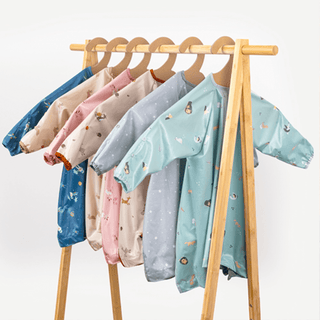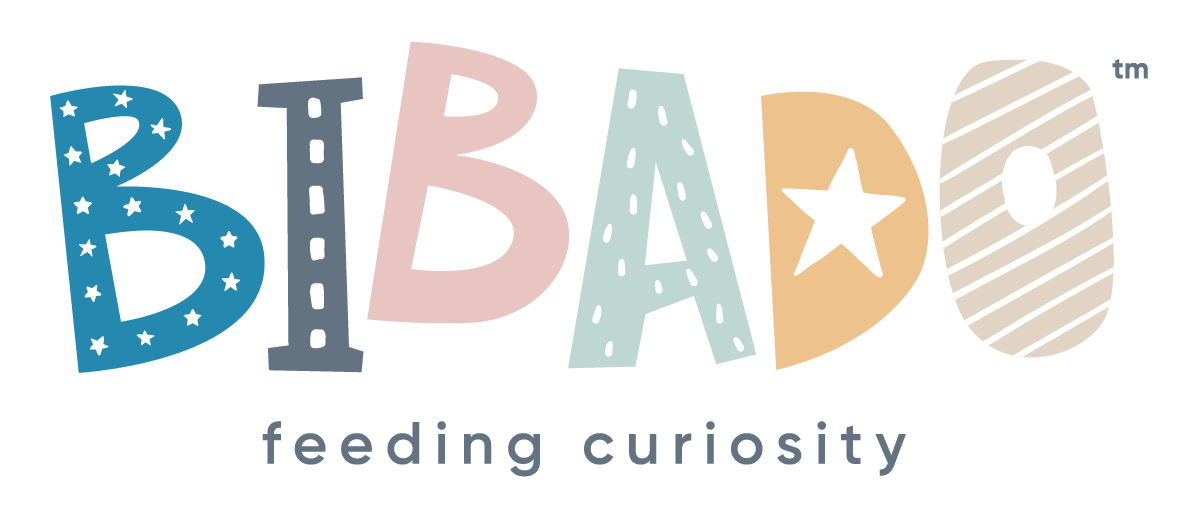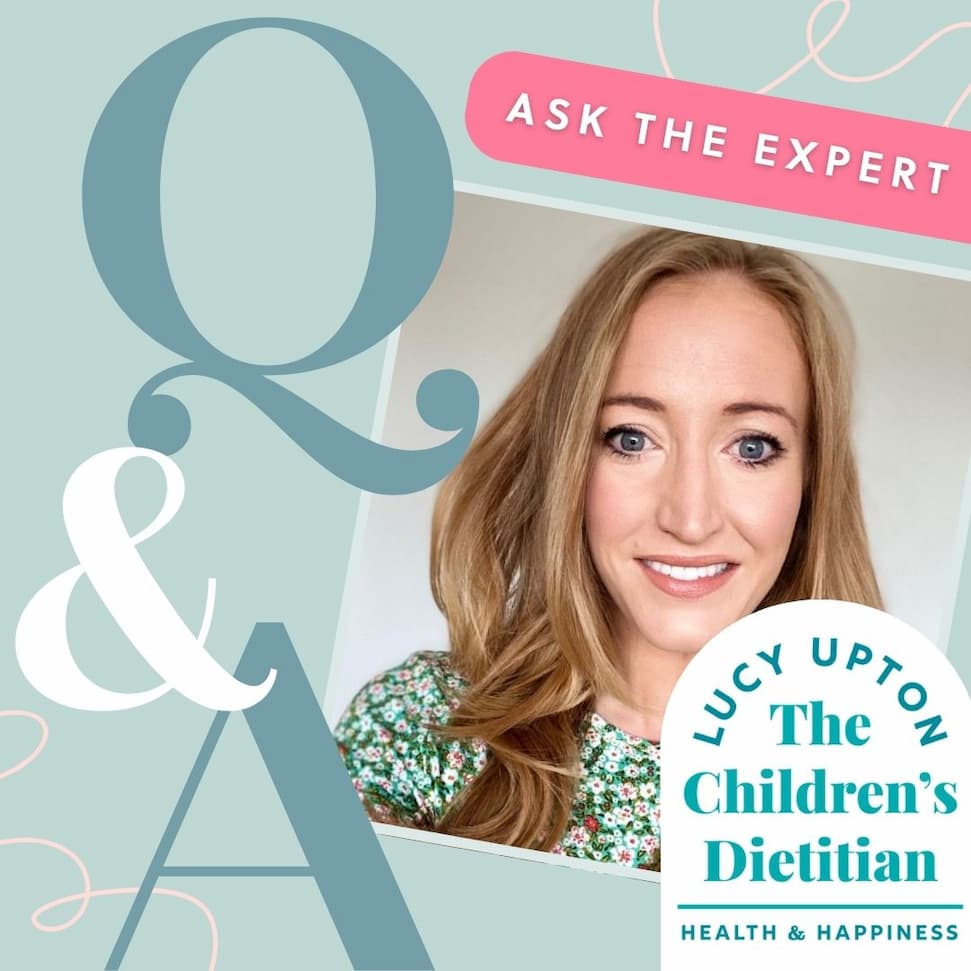Mealtime adventures are better with Bibado! Let our award-winning products make a difference to your weaning journey.
 Shop Now
Shop Now


This week, we’re talking about F.I.N.G.E.R., a handy little acronym to help you get to grips with finger food. We'll also discuss what foods to start with, the lowdown on lap feeding, and why introducing water with meals does more for your baby than just hydration.

This week, we’re talking about F.I.N.G.E.R., a handy little acronym to help you get to grips with finger food. We'll also discuss what foods to start with, the lowdown on lap feeding, and why introducing water with meals does more for your baby than just hydration.
Over to you, Lucy!
I see this question a lot in clinics. Many parents can feel anxious about starting with finger foods. The most common reason is fear of choking, though there is much research to suggest that if babies feed themselves, they can actually be safer eaters. While you’re gaining confidence and getting the hang of BLW, you can use this handy reference guide taken directly from my new book, The Ultimate Guide to Children’s Nutrition.
To begin with, your baby will benefit from long strips or pieces of food that are roughly the size of one to two adult fingers. The food should be wide enough for your baby to close their hand around it easily (using their palm - called a palmer grasp) and tall enough so it pops out of their grasp. If the food is slippery, like avocado or banana, you may want to roll it in ground oats or breadcrumbs, cut foods with a serrated knife, or leave the skin on the bottom. Your baby will be able to grasp this much more easily!
Once your baby develops their pincer grip (holding something smaller between the top of their thumb and forefinger) and gains experience with eating, you can typically start offering smaller bite-sized food pieces from around nine months old.
Initially, offer well-cooked or very soft foods that mash down or collapse if you apply gentle pressure between your finger and thumb (which mimics what happens in their gums). Think avocado, banana, and cooked sweet potato. You can progress with textures of finger foods as your baby’s eating skills develop and they gain more experience.
Avoid any common choking hazards* (see list below), and always sit with your baby when they are eating - choking can be silent.
It is common for babies to gag on finger foods (in fact, all foods) during weaning. This happens because finger foods can easily reach different areas of the mouth and tongue, triggering the gag reflex. Babies have a highly sensitive gag reflex situated much closer to the front of the mouth than adults, ensuring their safety while they learn to eat. Over time and with repeated exposure to a variety of foods, including finger foods, this reflex gradually moves further back in the mouth and becomes less reactive.
Your baby will not have the skills to chew and swallow much finger food initially, but they may well lick or suck the food, hold, squash, throw it, munch and push it back out. These actions are typical and essential to their learning experience, that will eventually help them eat these foods. Remember, experience and exposure to different foods build skills needed to eat.
You can support your baby’s skill development, and in this case with finger foods, by role-modelling and eating together. Your baby will be closely watching you, so try to eat the same food and model what to do with them, exaggerating the skills like biting and chewing. This helps them to see and understand what to do with the food and encourages them to copy and practise these skills.
Avoid foods high in salt and sugar or those considered a choking risk*. Outside of this, the reality is that there is a huge variety of foods that you can start with - and it’s not always the obvious ones you read about.
That said, it can be a minefield and a little overwhelming when you’re getting started, so here are some easy and straightforward foods you can consider - some of which are evidence-based to support your baby accepting them in the long term. For example, vegetables! You might want to start with courgette, broccoli, and cauliflower. You can also include things like root vegetables - carrots, parsnips, butternut squash.
And you’re not just limited to vegetables.Fruits offer a wide variety of tastes, textures and appearances, and are a great introduction to the exciting world of food.
Grains are a good option, and can be a good source of iron and nutrients to support their fast-paced growth and brain development. Think couscous, barley, amaranth, quinoa and oats.
Start small and build. Remember that breast milk or formula is still your child’s primary source of nutrition up until 12 months old, so don’t get too hung up on how much they eat. It’s those repeated exposures that are important—so even if they’re licking, squishing, and simply handling it, they’re building up a knowledge bank.
It probably won’t surprise you to find out that the answer is no. In fact, combining both methods - offering things that are spoon-fed alongside finger foods is actually bringing in the best of both worlds when it comes to food and exploration for your baby. Also, it’s important to recognise that spoon feeding can also be led by your baby, and is a great way to help them develop crucial motor skills and gain confidence in independent feeding!
It really comes down to choice. YOUR choice and which you feel suits your family best. I always like to think about the end result. Whichever road you take, we’re really looking to hit a few key criteria to help your baby develop:
Learning & developing the skills they need to eat
Having a wide variety of different foods & exposure to different textures
Developing self-feeding skills
These goals can be achieved with a spoon and with their hands, so choose your route or mix it up and go hybrid.
The simple answer is as soon as you start weaning at 6 months. If you are weaning your baby early, before 6 months on the advice of a health professional, then the water should be cooled boiled water. After 6 months of age, tap water in the UK is absolutely fine. Avoid bottled water—most of them contain too many minerals for your baby, including sulphates and sodium.
The benefits of introducing water during weaning are not limited to exposure to other liquids and hydration. Offering water in a small open cup from 6 months will also give your baby a mouth muscle workout and help with their hand-eye coordination and motor skills.
The safest way to feed your baby is with them in a supported, seated position facing you. If your baby is seated on your lap, they can recline, wiggle, and shuffle around. In this position, they are less likely to face you directly. These two factors combined mean the degree of risk starts to increase.
Wherever possible, they should be seated in a highchair, securely supported with a harness and any additional cushioning to keep them stable. They should be facing you so that you can observe them and also so that they can see you.
Aside from the safety risks, if your baby is seated on your lap, they can’t see food coming towards them or on the plate they need to reach for, so we’re inhibiting those anticipatory open-mouth reflexes.
I often discuss the importance of footrests. These provide core stability and support to enable your baby to eat without additional effort. If you’re unsure, eat your next meal with your back away from the rest and your feet off the floor. It makes the whole process tiresome and unnecessarily complicated. For more info, you can read about the 90|90|90 rule here.
*Choking hazards
Whole nuts and seeds
Mini chocolate eggs, boiled sweets, toffees or chewy sweets
Jelly cubes and marshmallows
Popcorn
Stones from fruit
Chunks of raw, hard vegetables or fruit - e.g. carrot, apple
Blueberries
Cherry tomatoes
Sausage cut into rounds
Follow us for more delicious, nutritious bite-size Bibado goodness